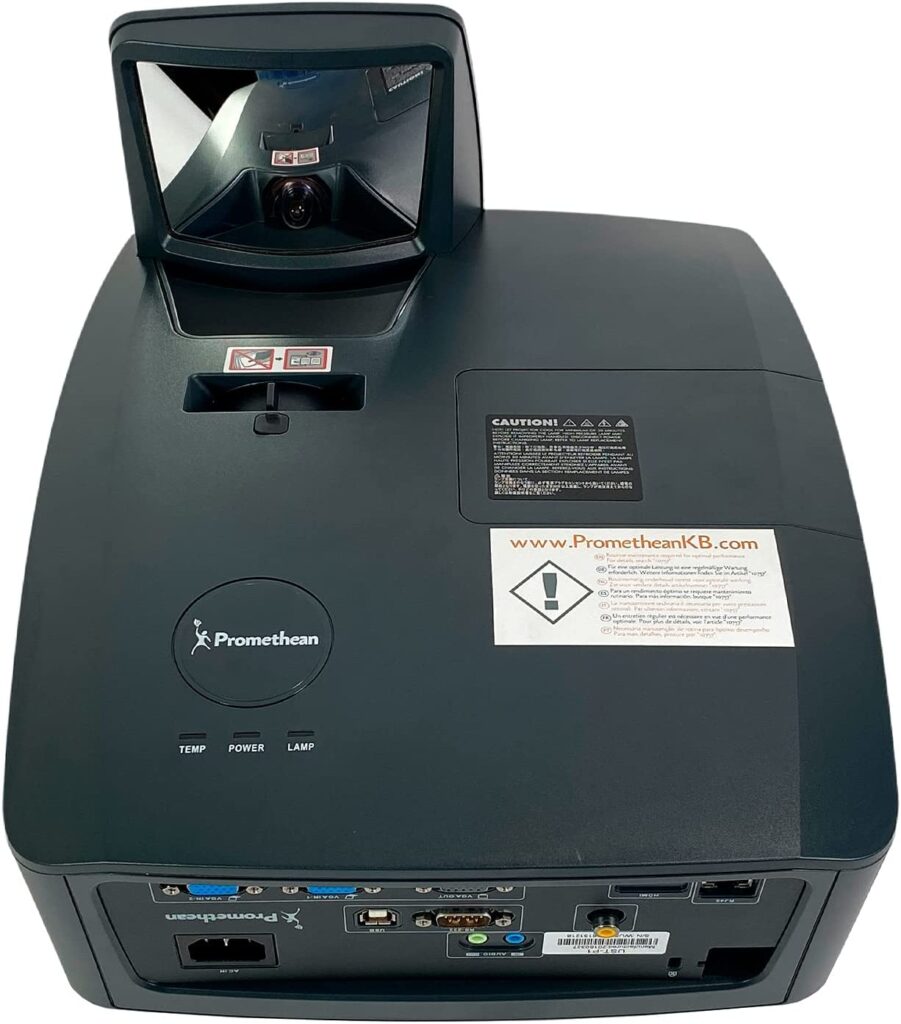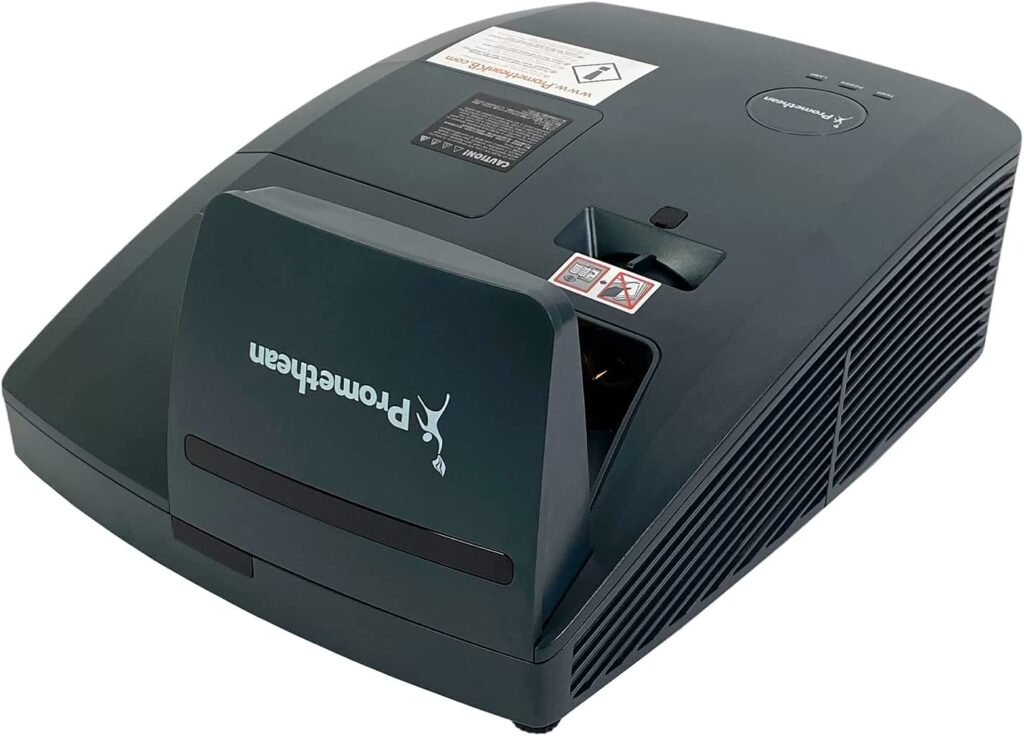

How to Turn On a Promethean Projector Without Remote?
Promethean projectors are widely used in classrooms, boardrooms, and various other settings for their interactive potentiality and high-quality display. However, what happens when you can’t find the remote control to power on the projector? In this article, we will explore several methods that allow you to turn on a Promethean projector without a remote, ensuring that you can continue your presentations or classes seamlessly.
Promethean projectors are advanced audiovisual devices that provide an immersive and associated experience. These projectors are equipped with various features and settings to enhance the user’s experience and promote effective presentations or teaching sessions. However, losing or misplacing the remote control can be a common occurrence, causing difficulty and hindering the projector’s operation. Thankfully, there are alternative methods available to power on the Promethean projector without the remote.
Understanding the Promethean Projector
Before we delve into the methods, let’s briefly understand what a Promethean projector is and its significance. A Promethean projector is a multimedia device that combines a projector and an interactive whiteboard. It allows users to display content from a computer or other sources onto a large screen or surface, enabling interactive engagement through touch or digital pen input. These projectors are commonly used in educational institutions and corporate environments to facilitate dynamic presentations, collaborative learning, and engaging discussions.
Methods to Turn On a Promethean Projector without a Remote
If you find yourself without the remote control for your Promethean projector, don’t worry. Here are five alternative methods you can use to turn on the projector:
Method 1
Using the Control Panel on the Projector
The control panel on the Promethean projector provides direct access to its functions and allows you to turn it on without the remote. Here’s a step-by-step guide on using the control panel:
- Locate the control panel
The control panel is usually located on the top or side of the projector. It consists of various buttons and navigation controls.
- Power source
Ensure that the projector is connected to a power source and turned on. Identify the power button: Look for the power button on the control panel. It is typically represented by a symbol such as a circle with a line.
- Press the power button
Press the power button once to turn on the projector. You may need to hold the button for a few seconds, depending on the model.
- Wait for initialization
The projector will take a few moments to initialize and start up. You may see an indicator light or display on the control panel.
- Adjust settings if necessary
Once the projector is on, you can use the navigation controls on the control panel to adjust settings like brightness, volume, and input source. Using the control panel is a convenient method to power on your Promethean projector when the remote is not available.
Method 2
Utilizing the On/Off Button on the Projector
Another straightforward method to turn on the Promethean projector without a remote is by using the physical on/off button. Follow these steps:
- Locate the on/off button
Check the front, side, or top of the projector for the on/off button. It is typically labeled or represented by the power symbol.
- Ensure power supply
Make sure the projector is connected to a power source and turned on.
- Press the on/off button
Press the on/off button to power on the projector. Hold the button for a few seconds if necessary.
- Wait for startup
The projector will begin its startup process, and you’ll see indicators or lights showing the progress.
- Adjust settings
Once the projector is on, you can adjust settings using the control panel or other available controls on the projector
Using the on/off button directly on the projector is a reliable method to turn it on without needing the remote control.
Method 3
Employing a Mobile App as a Remote Control
In the era of smartphones, utilizing a mobile app as a remote control offers a convenient solution. Here’s how you can use a mobile app to control the Promethean projector:
- Check compatibility
Verify if there is an official mobile app available for your specific Promethean projector model. Visit the app store on your mobile device and search for the official Promethean app.
- Download and install the app
Download the app from the app store and install it on your mobile device.
- Connect to the same network
Ensure that both your mobile device and the projector are connected to the same Wi-Fi network.
- Launch the app
Open the Promethean app on your mobile device. The app should automatically detect the projector on the network.
- Follow the app instructions
The app will guide you on how to connect to the projector and use it as a remote control. Typically, you’ll have access to various functions, including power on/off.
Using a mobile app as a remote control not only allows you to turn on the Promethean projector but also provides additional features and convenience for controlling the projector’s settings.
Method 4
Using a Universal Remote Control
If you have a universal remote control, you can program it to operate the Promethean projector. Follow these steps:
- Check compatibility
Ensure that your universal remote control supports the Promethean projector model. Consult the universal remote’s user manual or manufacturer’s website for compatibility information.
- Prepare the universal remote
Make sure the universal remote is set up and ready for programming. Follow the instructions provided with the remote to prepare it for programming mode.
- Find the projector code
Look for the specific code for your Promethean projector model. The code is usually available in the universal remote’s user manual or on the manufacturer’s website. If you not listed the code, you can try using the “search” or “auto-scan” feature on the remote.
- Enter programming mode
Put the universal remote into programming mode according to the instructions provided. This step may involve holding down certain buttons or entering a specific code.
- Program the code
Enter the projector code using the buttons on the universal remote. Follow the instructions to complete the programming process. Once programmed, the universal remote should be able to control the Promethean projector, including turning it on and off.
Using a universal remote control provides a convenient alternative to the original remote for operating the Promethean projector.
Method 5
Utilizing HDMI-CEC Functionality
If you connect your Promethean projector to a device using HDMI, you can leverage the HDMI-CEC (Consumer Electronics Control) functionality to control the projector without a dedicated remote. Here’s how
- Check HDMI-CEC compatibility
Ensure that both the Promethean projector and the HDMI-connected device support HDMI-CEC. Most modern projectors and devices have this feature, but it may have a different name depending on the manufacturer (e.g., Samsung’s Anynet+ or Sony’s Bravia Sync).
- Enable HDMI-CEC
Access the settings menu on both the projector and the HDMI-connected device. Look for the HDMI-CEC or similar option and enable it on both devices. This feature allows the devices to communicate and control each other.
- Power on the HDMI-connected device
Use the regular power button or remote control of the HDMI-connected device to turn it on. The projector should automatically detect the signal and power on.
- Control the projector
Enable once the HDMI-CEC, you can use the HDMI-connected device’s remote control to navigate and control the Promethean projector. The remote’s power button should turn on/off the projector accordingly.
Utilizing HDMI-CEC simplifies the process of turning on the Promethean projector by leveraging the control capabilities of the HDMI-connected device.
By following these alternative methods, you can successfully turn on your Promethean projector even without the original remote control. Remember to choose the method that best suits your situation and device compatibility.
Troubleshooting Common Issues
While attempting to turn on a Promethean projector without a remote, you may encounter some common issues. Here are a few troubleshooting tips:
- Power supply
Ensure that the projector is connected to a power source and that the power cable is securely plugged in. Check if the power outlet is functioning correctly.
- Connection issues
Verify that all necessary cables, such as HDMI or VGA, are properly connected between the projector and the input source device. Ensure that the cables are undamaged.
- Control panel accessibility
If the control panel on the projector is not responding, check if any buttons are stuck or malfunctioning. Try gently pressing and releasing each button to ensure proper functionality.
- Mobile app connection
using a mobile app as a remote control, double-check that both the mobile device and the projector are connected to the same Wi-Fi network. If the app fails to connect, restart the app and ensure that it is up to date.
- Universal remote programming
If the universal remote control is not working, double-check the entered code for the Promethean projector. Ensure that the programming process was completed correctly and that the remote is compatible with the projector model.
- HDMI-CEC functionality
If HDMI-CEC is not working, verify that both the projector and the HDMI-connected device have HDMI-CEC enabled in their settings. Try power cycling both devices by turning them off and on again.
If you have gone through these troubleshooting steps and are still unable to turn on your Promethean projector without a remote, it may be necessary to contact the manufacturer’s support for further assistance.

Conclusion
In conclusion, even without the remote control, you can still turn on your Promethean projector using alternative methods. By utilizing the control panel on the projector, the physical on/off button, a mobile app as a remote control, a universal remote control, or HDMI-CEC functionality, you can power on your projector and continue your presentations or classes seamlessly. Remember to check compatibility and follow the step-by-step instructions for each method. With these solutions at hand, you can confidently use your Promethean projector without relying solely on the remote control.
FAQs
1. Can I use any universal remote control for my Promethean projector?
Universal remote controls vary in compatibility with different projector models. Refer to the universal remote control’s user manual or check the manufacturer’s website to ensure it supports your Promethean projector model.
2. Is it possible to turn on the Promethean projector using a computer or laptop?
Typically, the power button on a computer or laptop does not directly control the Promethean projector. However, you can use the alternative methods mentioned in this article to power on the projector without the remote control.
3. Can I use a smart home assistant, like Amazon Echo or Google Home, to turn on the Promethean projector?
Promethean projectors are not directly compatible with smart home assistants. However connect your projector to a device with smart home integration, such as a smart TV or media player, you may be able to control the projector indirectly through the smart home assistant.
4. What should I do if none of the alternative methods work for my Promethean projector?
All the alternative methods are still unable to turn on your Promethean projector without the remote so we recommend contacting the manufacturer’s customer support for further assistance.
5. Are there any risks in using alternative methods to turn on the Promethean projector without the remote?
When using alternative methods make sure that you follow the provided instructions carefully therefore you can prevent any damage to the projector or other connected devices. If you are unsure or encounter any difficulties, it is best to consult the user manual or seek professional assistance.